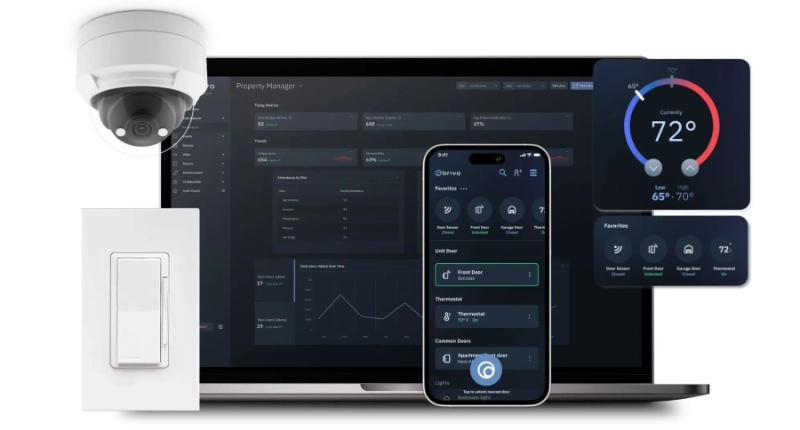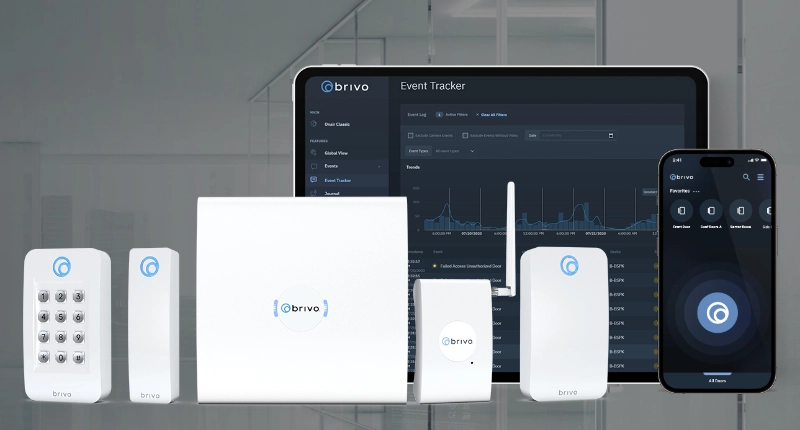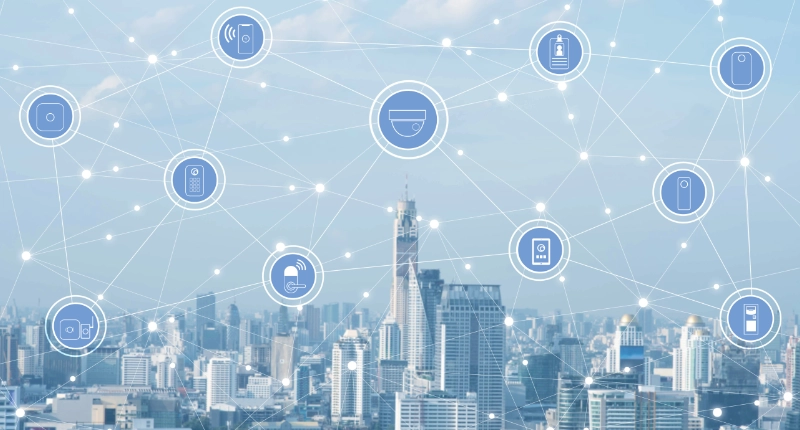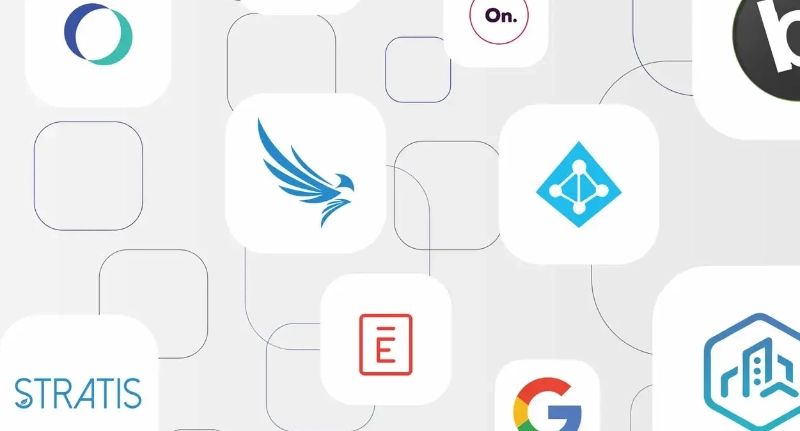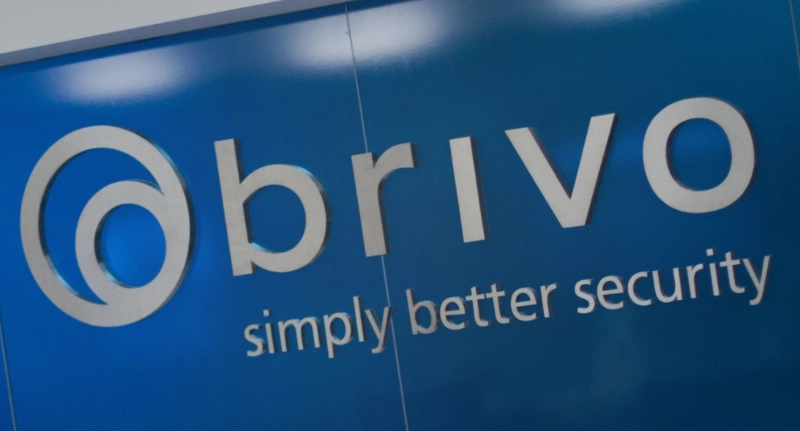““All of your electronic security stuff will become IoT devices. You need to get on board.” – Steve Van Till, President & CEO, Brivo” – Steve Van Till, President & CEO, Brivo
First comes cloud, then comes mobile, then comes IoT to disrupt our traditional connection to physical spaces.
To learn more about cloud technology and how it changes facility management, check out Step 1 in the Technology Roadmap Toolkit. To understand the impacts of mobile technology on the future of physical security, read Step 2 in the Technology Roadmap Toolkit.
Cloud computing changed the way we gather and interact with data. Mobile changed the where we interact with and control that data. IoT is changing how we interact with the physical spaces and things around us.
What is IoT?
The Internet of Things (IoT)“refers to the connection of devices (other than the typical fare such as computers and smartphones) to the Internet. Cars, kitchen appliances and even heart monitors can all be connected through the IoT. And as the Internet of Things grows in the next few years, more devices will join that list.” – https://www.businessinsider.com/internet-of-things-definition
The exponential expansion of IoT has set a new standard for physical security. Our industry can reap huge benefits from this technology movement.
Now that sensors are cheap and readily available, everyone is getting on board. There are also new players in the industry, including Silicon Valley companies, creating sensors. In just four years the size of the IoT retail market in the US has almost doubled and is projected to more than triple by 2025.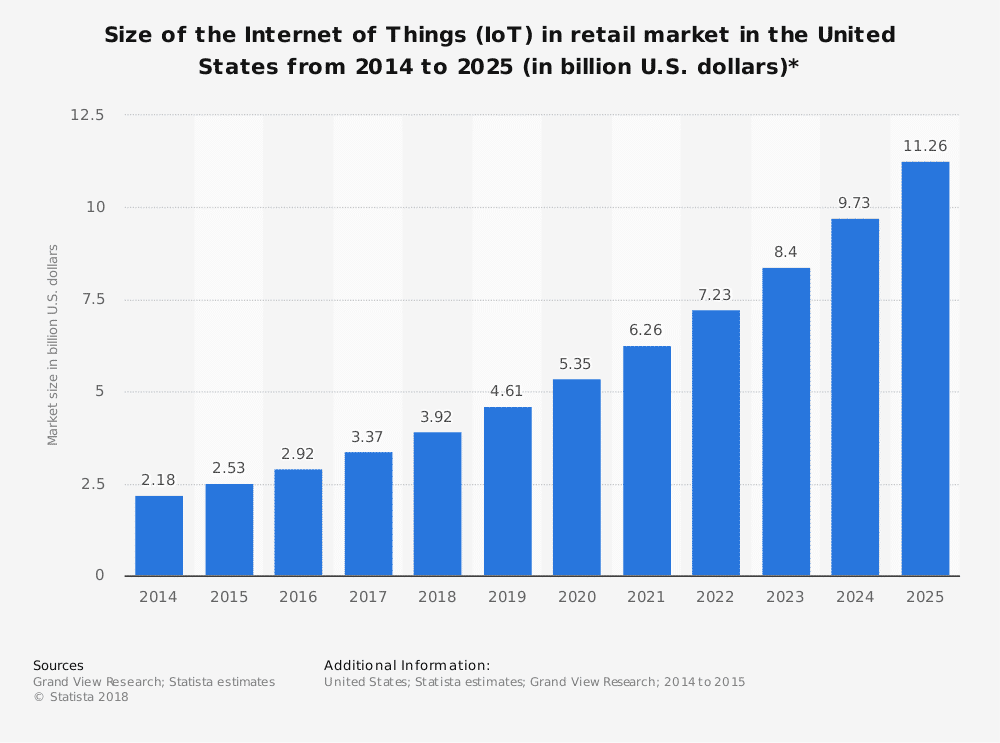
Source: Global Market Insights; Statista estimates
A recent security technology executive article pointed out, “The IoT landscape includes all sorts of devices that sense inputs and perform actions far outside the physical security world. This means there are large organizations (like Google) exploring the use of IoT devices. What this means for physical security is that you can, and in fact, have had players enter the marketplace that came from backgrounds other than locks and construction and guard services. So the first impact is that the marketplace has more players here today and an ongoing influx of new players.”
The future of IoT is exciting, vast and growing exponentially.
Why is IoT important to integrate into my physical security strategy?
What’s the opportunity?
IoT allows you to obtain tons of information and connect all of your electronic devices. Knowledge of who accesses the building, when they access it, and their behavior once inside
offers valuable data for security managers to create daily schedules and plan high-level strategies.
The connection and integration with other building automation makes IoT an integral part of your future planning. Property management system, facility management system, HR system, light control system and HVAC system data can all be captured and analyzed for a holistic view of your facilities.
The number of smart, connected buildings and even cities using IoT technology is expected to magnify in the next six years.
The explosion in sensors equals an explosion in information. Knowledge is power, this new information can give you insights into your facilities that enable you to protect them far more efficiently through IoT technology.
What’s at stake?
It’s no secret that IoT technology offers tons of potential. The risk is in waiting to implement and use it.
The security department isn’t the only part of your company that is interested in IoT. Waiting to dive into IoT means risking data ownership and access to insights. Building management and HR are interested in IoT as well. The questions become:
- Who’s going to own the data?
- Who’s going to get to use the data?
- What’s it going to be used for?
- And, most importantly, are you going to be able to equip the environment with the sensors that you need as a security professional to get the insights you want?
What gets monitored and who gets access to that data is undecided right now in most organizations.
However, there is another risk involved that comes along with being first to the IoT finish line. At this point, there is an absence of agreement on technical standards around IoT and there will eventually be a shakeout when we will see which standards are going to last and which aren’t.
When should you start planning your IoT strategy?
Consider IoT for a mid-term strategy.
It’s important to think through how your organization will use IoT. What are your goals around it? What data are you looking to collect, and how are you planning to use that data?
When you start thinking through your IoT strategy, make sure to do your research. There are tons of IoT companies that publish useful information to help you plan and execute your IoT strategy.
How to start the IoT conversation with your executives for future buy-in.
What would your executives say if you told them there was a way to reduce human error, increase efficiencies, improve security, improve interdepartmental collaboration and reduce costs?
IoT technologies bring building automation and access control together resulting in reduced costs and increased efficiencies around environmental controls and energy management. The safety and security of your facilities are also made more holistic.
An article from Building Operating Management magazine explains the challenges and benefits of building IoT. “Upfront cost is another inevitable challenge; however, once systems are up and running, that cost is outweighed by the ROI provided by cheaper utility bills. These technologies have also reduced time spent on corrective maintenance. Studies have shown reactive maintenance can take up to 98 percent of facility staff time, leaving only a small percent for preventive maintenance. Leveraging data into actionable items allows operators to focus on solving the problems instead of searching for them.”
Make sure your C-Suite understands these benefits from the start.
If you are looking to upgrade your access control system to a cloud solution, don’t forget to include IoT benefits in your business case. Access the full template for executive buy-in here.



